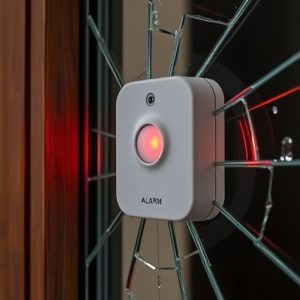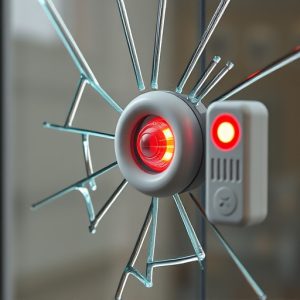Decoding the Glass Break Alarm Sensor: Detection, Science, Installation, and Technological Advancements
When it comes to safeguarding properties, glass break alarm sensors emerge as a pivotal component i…….
When it comes to safeguarding properties, glass break alarm sensors emerge as a pivotal component in security systems. These sophisticated detectors are designed to trigger an alarm at the sound of breaking glass, offering a prompt response to potential intrusions. This article delves into the intricacies of glass break alarm sensors, exploring their detection mechanisms, diverse applications, and the science that powers them. We’ll guide you through the process of installing and maintaining your sensor for peak efficiency, while also examining the latest advancements in technology that are shaping the future of these devices. Understanding their role in security will provide homeowners and businesses with the insight needed to fortify their premises effectively.
Understanding Glass Break Alarm Sensors: Detection Mechanisms and Applications
Glass break alarm sensors are integral components in security systems designed to detect the sound of breaking glass, signaling an immediate need for response. These sophisticated devices use advanced microphones or shock-sensitive elements to monitor for sounds and vibrations indicative of glass being broken. When a noise consistent with glass shattering is detected, the sensor triggers an alarm, alerting occupants and security personnel to the potential threat. This rapid detection capability is crucial in deterring intruders and ensuring the prompt evacuation of individuals from harm’s way.
The detection mechanisms employed by glass break alarm sensors are a blend of acoustic technology and impact recognition. Acoustically-based sensors analyze sound patterns against a database of recognized glass fracture frequencies, differentiating these from general ambient noise. Shock-sensitive sensors, on the other hand, rely on their ability to detect vibrations that exceed a predetermined threshold, indicative of physical tampering with glass surfaces. These sensors are widely used in residential and commercial security systems, providing an additional layer of protection beyond traditional door and window alarms. Their applications extend across various sectors, including homes, businesses, schools, and critical infrastructure facilities, enhancing overall safety and security.


